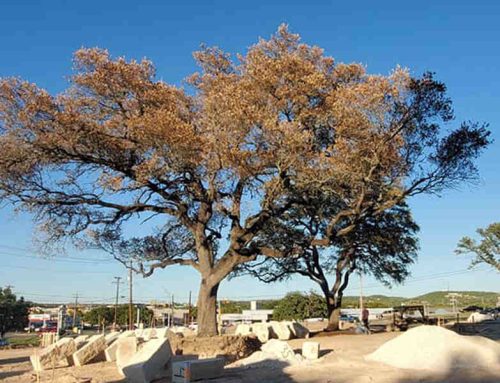Do you want to know how to save a tree with damaged bark? When your favorite specimen becomes injured from lawnmowers, pesky critters, or a passing brush with bad weather, it’s easy to feel a little disheartened.
As the go-to certified arborist in Boerne, we at Rockoff Tree Solutions have seen and fixed it all. In this blog post, our experts lend some insight and help you nurse your tree back to health.
Reviving Trees with Bark Damage Starts with an Inspection
Different situations require unique approaches. Trees with active infestations or infestations may need more specialized treatment.
Check your specimen for visible signs of pests or disease. Look closely for unusual markings, discoloration, or oozing spots that could indicate deeper problems. Do not overlook these signs, as they can provide important clues about the health of your tree.
Why Saving Trees with Damaged Bark Is Usually Unnecessary
If the damage seems superficial (less than 25% of the bark mass), there’s a good chance your tree can recover on its own.
Trees are incredibly resilient and will naturally heal from most injuries. Just like our skin forms a scab over a cut, a tree undergoes something called compartmentalization.
This process isolates the damaged area to prevent the spread of any infection. Over time, new bark grows over the wound and restores the tree’s outer protective layer.
Tree Bark Repair Methods
Do you want to know how to save a tree with damaged bark? A little care and attention can help your specimen recover faster. Our top techniques to rescue trees with injured bark include:
Bark Tracing
Bark tracing is a neat technique where you carefully trim the damaged bark. The smoother edge lying flush to the healthy bark promotes quicker natural recovery by eliminating jagged edges that can encourage disease and pest entry points.
With a sharp, sterilized knife, trace around the wound in an elliptical shape. Avoid cutting too deep—you just want to remove the rougher sections. If the tree’s vital cambium layer appears green and vibrant underneath, that’s a good sign of health.
Bark Reattachment
If the damaged bark still hangs in place and is relatively fresh, it’s possible to reattach it. Gently clean the underlying exposed area and the detached bark with water to remove any dirt or debris.
Carefully fit the bark back onto the tree while aligning it as closely as possible to its original position. Secure it using duct tape or biodegradable grafting tape; don’t wrap it too tightly to allow room for the tree’s natural growth.
Bridge Grafting
Bridge grafting is a popular bark damage treatment for trees with severe injuries. A large ring of bark removed or girdling injuries can significantly hinder a tree’s ability to transport nutrients and water.
Experts use small branches or twigs from the same species to connect the healthy bark above and below the damaged area. This forms a “bridge” that allows nutrients to bypass the wound and continue flowing throughout the tree. This method requires precise cuts and secure attachment to function effectively.
Boerne Arborist Remedies for Trees with Damaged Bark
The last thing you want is to watch your beloved specimen slowly succumb to damage and disease. Instead of guessing how to aid its recovery, why not consult Rockoff Tree Solutions?
Our specialists know how to save a tree with damaged bark and can:
- Provide a tailor-fit care plan
- Conduct follow-up checkups to monitor recovery progress
- Offer advice on preventing future damage through landscaping techniques and protective barriers
Dial 830-955-0304 today, or read our blog and learn how to save a damaged tree.




